#the reason why it's only epigraphs is because i went with my epigraphy professor
Explore tagged Tumblr posts
Text


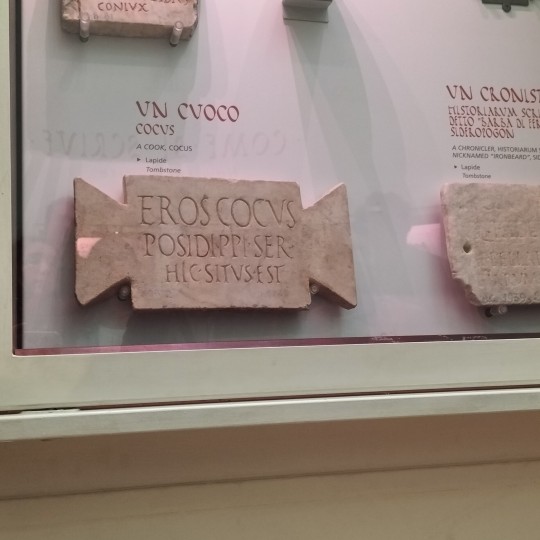
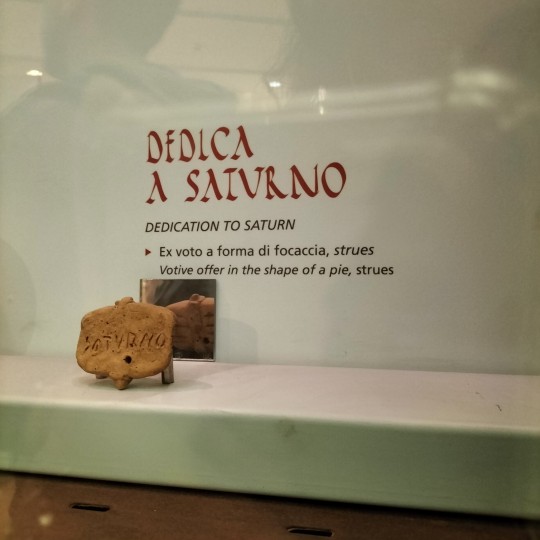
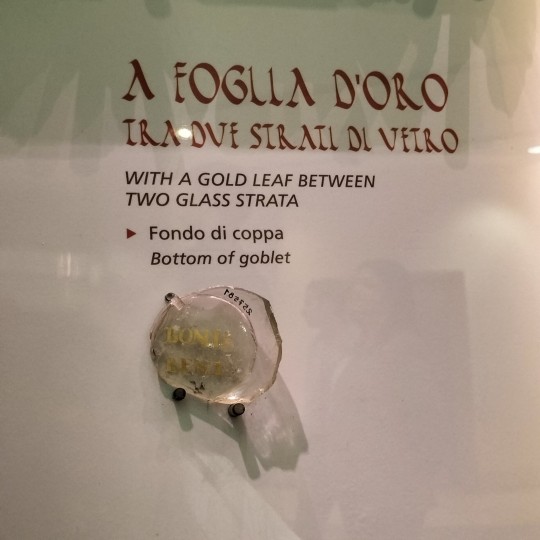
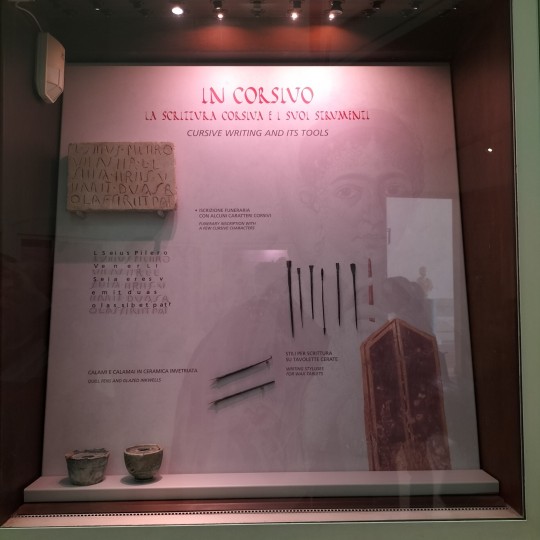

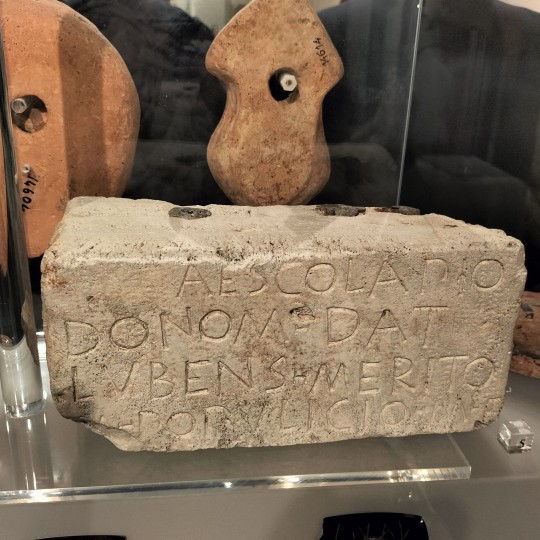

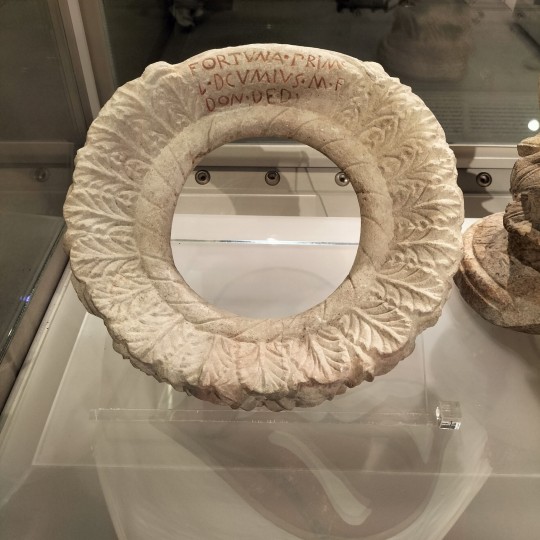
terme di diocleziano (part 1)
#the reason why it's only epigraphs is because i went with my epigraphy professor#paiawon.txt#archaeoblr#archaeology#tagamemnon#art history#rome#roma#studyblr#latin epigraphy#epigraph#terme di diocleziano#rome museum#museum#archaeology tag
7 notes
·
View notes
Text
Hyperallergic: The Rise and Fall of the Viking “Allah” Textile
Collaged images of (l.) a tablet woven band and (r.) a mirrored image of what is claimed to be the word “Allah” appearing in Viking Age patterns found in Birka, Sweden (both photographs by Annika Larsson via the Uppsala University Press Release)
It seemed like something from an episode of the last season of History’s show Vikings: a 10th- century, tablet-woven textile fragment found in a Viking boat grave was said to bear the words “Allah” and “Ali.” The textile, an image of which had been published in 1938 following excavation, was rediscovered by Swedish textile archaeologist Dr. Annika Larsson when working on an exhibition on the finds from Viking-age Birka and Gamla Uppsala, in what is now Sweden.
Patterns on the textiles, said Dr. Larsson, reminded her of styles of Arabic script found on mausolea and tombs from Central Asia as well as on medieval Spanish “ribbons” (an odd wording which I guess may mean woven, Spanish tablet bands. Based on her findings, Uppsala University, Sweden’s most venerable institution of higher learning, issued a press release including quotes from Larsson deeming the finding “staggering.” Within days, dozens of newspapers, from the New York Times, to The Guardian, to the BBC had reported the story, calling it a “breakthrough,” and the story had gone viral on the internet. Some reports were more measured than others, but the hype extended to headlines asking “Were Vikings Muslim?”
The truth is, the Viking textile from Birka has no Arabic on it at all. Evidence for contact between the Vikings and the Islamic world is abundant and uncontested, but this particular textile fragment cannot be counted among that evidence. What the rapid rise and fall of this story reveals is perhaps more telling about this particular moment in our accelerated media world than it is about Vikings and Muslims. I first laid out the evidence for my claim earlier this week in a 60-tweet-long thread on Twitter.
As an Islamic art historian and archaeologist, I was immediately suspicious about the style of Arabic epigraphy in Larsson’s reconstruction drawing. The primary issue, it appears, is a serious problem of dating. The Birka Viking textile dates to the 10th century, while the style of epigraphy in Larsson’s reconstruction drawing dates to the 15th century, 500 years later. It’s a style called Square Kufic, which is distinguished from other, earlier forms of Kufic in being constrained by a set geometric grid, usually a square (hence the name).
It’s a style called square Kufic, and it’s common in Iran, C. Asia on architecture after 15th c., ex: Safavid Isfahan w/Allah and Ali 9/60 http://pic.twitter.com/pbGJNFITGk
— Stephennie Mulder (@stephenniem) October 16, 2017
Kufic is the earliest form of Arabic script, and is common from at least the 7th century. The very earliest examples of Square Kufic date to the 11th century, but the style of Square Kufic in Larsson’s drawing is a later form, which evolved in Iran and Central Asia in the Timurid period (1370–1526), and which became widespread in the Safavid era (1501–1736). This example, taken from Safavid Isfahan, also contains the words “(Oh) Allah” (at center) and “Ali” (on the right and left, in blue), so it is a good comparison for the claims made about the Birka textile.
The key difference between these earlier examples and the Square Kufic in Larsson’s drawing is that the final character in the drawing has an Arabic letter “ha” ـه with a hook over it that indicates it belongs firmly to the post-15th-century style of square Kufic. That style of “ha,” to put it simply, just doesn’t exist prior to the Timurid period. This matters because Larsson had specifically cited Central Asian funerary architecture as comparanda for her textile fragment. But the dates don’t add up.
Earliest examples of square Kufic on architecture date to the 11th-early 12th century: Panel of Ibrahim b. Mas‘ud, ca. 1059-1099 10/60 http://pic.twitter.com/qGZGb4G8gP
— Stephennie Mulder (@stephenniem) October 16, 2017
But let’s assume there were 10th century textiles with square Kufic on them — perhaps, as yet, undiscovered or unpublished. Perhaps Larsson’s find is the first example of the form that would be widespread 500 years later. It turns out that this theory is also problematic, and for an even more fundamental reason: the drawing doesn’t actually say “Allah” at all. Instead, it says “lllah” للله, a nonsensical word in Arabic. The first letter is a not an alif (an a), but a lam, (an l). Though the Arabic letters alif and lam resemble each other, alif never connects to the letters following it, as lam does. Arabic phrases like al-hamdulillah (الحمد لله) incorporate the phrase “li-llāh,” which in that context means (praise) to God. However the phrase “to God” doesn’t typically stand alone, and it’s always spelled لله with two uprights, not three. To argue that “lllah” and “Allah” are the same would be as absurd as arguing that “Dod” and “God” are the same word.
This line of faulty Arabic epigraphic reasoning is similar to a claim made for another sensational find: the Viking ring said to say “to” or “for God,” which was widely publicized in 2015. For the ring, as Leiden epigrapher Marjin van Puten has shown: the best conclusion is that it represents a kind of pseudo-Kufic, a form of Kufic meant to imitate the look of real Arabic, but is in fact only meaningless geometric forms.
The presence of pseudo-Kufic tells us something important: that Arabic was valued by the Vikings as a mark of social status or capital, much in the way we might today buy a perfume with “Paris” written on it. For the Vikings, 10th century Islamic cities like Baghdad, Cordoba or Cairo were the Paris of their day: glittering capitals of art, scientific knowledge, and culture. And we have some evidence of the use of Arabic as social capital in the form of pseudo-Kufic inscriptions on weights for measuring silver. There are even examples of the use of real Kufic, most famously in the case of the dirham of the Anglo-Saxon King Offa of Mercia (r. 757–796), who kept the Arabic Shahada (profession of faith) intact as he inserted his name in the middle. It was modelled off a coin of the Abbasid Caliph al-Mansur, struck in Baghdad in the year 754–5.
Gold imitation dinar made for the Anglo-Saxon King Offa of Mercia, modeled on an Arabic coin for the Abbasid Caliph al-Mansur (photo via British Museum, Creative Commons license)
Spanish ribbons are also cited by Larsson as inspiration. But these also don’t seem to work date-wise. As medieval Spanish textile expert Maria J. Feliciano has indicated to me, all known Square Kufic, tablet-weave textiles are post-13th century. We can find examples from Santa María La Real de Huelgas in Burgos, or in the maniples with Square-Kufic-like decoration on the Chasuble of Saint Edmund, Provins. Both date to the 13th century. Interestingly, these later European examples of supposed Square Kufic actually also bear pseudo-Kufic, ersatz Arabic writing. But obviously, neither can be inspiration for the 10th-century Birka fragment.
The final argument I made in my thread is that the textile cannot have extended beyond the original band in the form represented in Larsson’s reconstruction drawing, which rendered the band at nearly twice its actual width. This is the case because the textile is known to have had a finished edge, or selvedge, along both long sides — much as a silk ribbon does. This analysis was put forward in a blog post by Viking textile specialist Carolyn Priest-Dorman a few days after the press announcement by Uppsala University.
Since the original press release, Larsson has clarified that she did not mean to say the band was originally wider, but rather that she was recombining different elements of the band found along its length. In Larsson’s reading, the viewer would have presumably mentally “cut up,” turned, and recombined two separate geometric elements to create reverse Square-Kufic-like letter forms, which would then have had to be read in mirror image. “The scripts on the ribbons are like secret messages,” she has said. This, too, seems a highly improbable reading of the textile, with no known precedents in Islamic art.
But reconstruction drawing by @UU_University textile archaeologist Annika Larsson shows extensions on either side that include a ha. 32/60 http://pic.twitter.com/1NyQzcqDV2
— Stephennie Mulder (@stephenniem) October 16, 2017
One might ask why all this matters. Why should we care about whether a 10th-century textile says “Allah” or not? Particularly in the context of the abundance of evidence for genuine interaction between Viking Scandinavia and Islamic lands, it’s a good question to ask. Couldn’t we just let this factual error slide, given that it evokes the deeper truth of extensive Viking interaction with the Islamic world? For me, three things stand out.
First, this story likely went viral in part because of recent events. Charlottesville revealed to all what has long been known among medievalists: that white supremacists use medieval imagery and symbolism to further their cause. At Charlottesville we saw medieval banners and chants with Crusader phrases like Deus vult (God wills!). White supremacists are attracted to medieval imagery for a simple reason: they believe the medieval era was a time when Europe was white.
But the story struck a chord because it builds on accurate scholarship that shows that the Viking era included extensive contact with the Islamic world as well as other distant locales. At Birka and earlier, at nearby Helgö, Viking grave goods included a Buddha from India and a Coptic ladle from North Africa. And at Birka, in same boat grave as the Viking “Allah” textile, there were Arabic coins from Baghdad. As Yale professor of Viking history, Anders Winroth, reminded us this week, hundreds of thousands of Arabic coins have been found in Viking lands. In fact, they are so abundant that one could reasonably argue the Shahada is the most common inscription in Viking Scandinavia.
Ibn Fadlan famously travelled from Baghdad to Viking lands in the 10th century, a journey popularized by Michael Crichton in his novel Eaters of the Dead. Crichton’s novel was made into a film, The Thirteenth Warrior, which has a devoted cult following. Many, in the aftermath of Brexit and the election of Trump — both of which events rode on anti-immigrant sentiment and a false narrative of past racial purity — want to see glimpses of our genuinely culturally diverse past. So the Viking “Allah” textile exhibits what Stephen Colbert once called “truthiness.” In other words, it feels like it ought to be right, but in this case, doesn’t stand the test of evidence.
Some might argue that to dismiss any of the evidence for such interaction plays into the hands of white supremacists, and indeed, since I wrote my thread a few right-wing media stories referring to it have appeared, most of which, predictably, distort my overall message. But if we accept a manipulation of the facts, we are no different than white supremacists for whom manipulation of the facts is their stock in trade. It is our method and standard of evidence that separates the work of art historians, historians, archaeologists, and other experts from the hateful distortions peddled by white supremacists.
There is something very troubling about what the Viking “Allah” story — both its rise and its equally rapid fall — reveals about the relationship between news media and experts, who, in the absence of a peer-reviewed paper by Larsson, should have initially been consulted for verification of Larsson’s findings. Journalists do difficult, admirable, and vital work, particularly in the face of the last decade’s changing media landscape that has brought serious cuts to newsrooms. But for news media “truthiness” should not be sufficient cause to run a story — especially in this age of relentless accusations of “fake news.”
When the medieval period, and particularly the Viking era, is used as an ideological weapon by white supremacists, with some scholars even risking their careers to fight white supremacists’ false appropriation of history, and when other groups, like ISIS and al-Qaeda, use similarly false narratives about the medieval past to justify the murder of thousands, it matters that we get this right. The media can report on the genuine diversity of the global Middle Ages without resorting to trumped-up scholarship. But scholars need the media to seek them out, consult experts, and get the facts correct. In other words, the Viking “Allah” story tells us more about ourselves than it does about either Vikings or Islam.
The post The Rise and Fall of the Viking “Allah” Textile appeared first on Hyperallergic.
from Hyperallergic http://ift.tt/2heIurd via IFTTT
0 notes